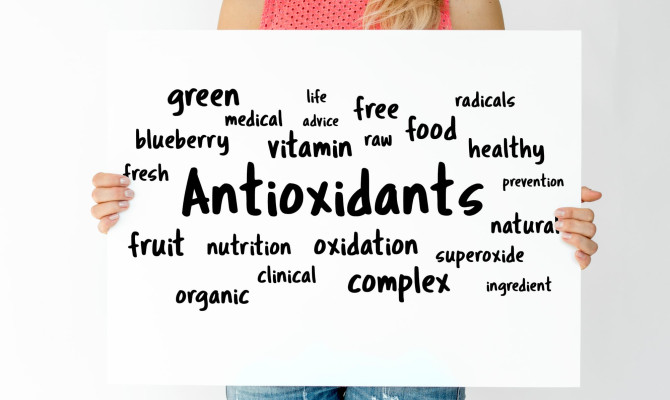Vitamin A and its benefits

- Vitamin A
- 22 Aug 2023
Overview
What is Vitamin A ?
The word “vitamin A” is a catch-all for a variety of fat-soluble compounds, called retinoids that include beta carotene, retinyl palmitate, and retinol. It is necessary for the healthy formation and operation of numerous body components, including vision, the skin, and the body’s immune system. 1Overview| Researched based study from Nlm.nih.gov There are two ways to get vitamin A through food. Preformed vitamin A, also known as retinol and retinyl ester, comes from animal products such as meat, dairy, and fish. Provitamin A / beta carotenoids that are present in brightly colored plants, that are later transformed into vitamin A by the body.

Functions
Functions of Vitamin A
Vitamin A performs several vital tasks in the body, including:
- Helps the body’s natural defense mechanism (immune system) fight illness and infection.
- It plays a crucial part in vision and eye health. Rhodopsin, a molecule required for low light vision and color vision, is created when the retinal, the active component of vitamin A, interacts with the protein opsin. 2Significance| Researched based study from Frontiersin.org
- It also assists in maintaining and protecting the conjunctiva, which is a thin membrane that covers the inside of the eyelids and the cornea, the eye’s outermost layer.
- Assists in forming and maintaining strong bones and teeth.
- Assists in maintaining surface organs like the inner ear, bladder, lungs, skin, and intestines.
- Encourages healthy reproductive system and fetal development. 3Significance| Researched based study from Nlm.nih.gov It also contributes to a good pregnancy and lactation.
- As an antioxidant, beta-carotene guards against free radical harm to cells. Some long-term illnesses and aging are thought to be brought on by free radicals.
Benefits

Benefits of Vitamin A
Vitamin A has a variety of purposes, including:
- Vitamin A deficiency – Used primarily to tackle vitamin A deficiency.
- Immunity – Keeps a person’s immune system strong and operating well.
- Improves reproductive health – Vitamin A may help maintain reproductive health of an individual.
- During pregnancy – Enables healthy development of the baby. It can also help avoid night blindness and xerophthalmia (dry eyes) in pregnant women. 6Benefits| Researched based study from Nlm.nih.gov Also lowers the chance of maternal deaths of undernourished women following delivery.
- Newborn lung disease – A doctor’s injection of vitamin-A appears to lower the chance of this lung condition like Bronchopulmonary dysplasia in newborns who were born underweight.
- Vision problems – Consuming enough vitamin A helps avoid night blindness from developing 4Benefits| Researched based study from Nlm.nih.gov and may slow the deterioration of your vision with aging. 5Benefits| Researched based study from Nlm.nih.gov
- Acne and anti-aging – Vitamin A (retinol) cream application enhances skin tone, elasticity, and wrinkles in those with aging skin and is also beneficial for acne.
- White patches in the mouth – called oral leukoplakia, typically brought on by smoking and can be treated with vitamin A.
- Treats sun-damaged skin – by making it better with smoother skin and fewer wrinkles after using vitamin A (retinol) serum.
- Measles – Giving vitamin A supplements to young children who are vitamin A deficient appears to lower their chance of contracting measles, its associated challenges, and death.
- A type of inflammatory bowel disease called ulcerative colitis – taking vitamin A orally once a day for two months can ease symptoms.
- Cancer prevention – Ensuring that a person consumes enough vitamin A from natural sources may lower their chance of developing certain cancers, such as bladder, lung, and cervical cancer. 6Benefits| Researched based study from Nlm.nih.gov
Dosage
Dietary requirement
The Recommended Dietary Allowance, or RDA, is the typical daily consumption that satisfies an individual’s nutrient needs. 7Dosage| Researched based study from Medlineplus.gov Based on age, the RDA for vitamin-A differs from person to person as follows:
- RDA for Infants of 0 – 6 months – 400 mcg/day
- RDA for Infants of 7 – 12 months – 500 mcg/ day
- RDA for children –varies based on the age from 300 – 600 mcg/ day
- RDA for adult males – 900 mcg daily
- RDA for adult females – 700 mcg daily
- RDA for pregnant women – 770 mcg daily
- RDA for breastfeeding women – 1300 mcg daily (Mcg – micrograms)
Types
Types of vitamin A
Vitamin A can be found in food in two different forms:
- Preformed retinol – It is an active type of vitamin A that can be found in animal organ meat, some fortified food, and dairy products.
- Provitamin A (beta-carotenoids) – Following ingestion, the body transforms these plant pigments into vitamin A.
Both forms of vitamin A that are consumed must be converted into retinoic acid and retinal forms after absorption for the body’s processes to work. 8Types| Researched based study from harvard.edu
Sources
Sources of Vitamin A
Eating a range of vegetables, fruits, fortified dairy products, lentils, legumes, and whole-grain products is the best way to ensure that an individual is getting all the essential vitamins they need each day. 8Sources| Researched based study from harvard.edu
Animal source
May be rich in saturated fat. Therefore, refrain from eating a lot at once. 8Sources| Researched based study from harvard.edu
- Eggs – a whole hard-boiled egg.
- Meat – such as organ meat, beef liver, lamb liver, etc.
- Seafood – such as mackerel, salmon, tuna, cod liver oil, clam, oysters, etc.
- Dairy products – such as whole milk, cheddar cheese, cream cheese, etc.
Vegetable source
Beta-carotene can be found in low-fat, cholesterol-free vegetables. When these sources are consumed with a small quantity of fat, their absorption is enhanced. Colorful vegetables have more carotenoids, especially orange or red. 8Sources| Researched based study from harvard.edu
- Sweet potato.
- Carrots
- Spinach
- Pumpkin.
- Broccoli
- Red pepper
- other green leafy vegetables.
Fruit source
Fruits that are more brightly colored have more carotenoids than those that are less colorful. 8Sources| Researched based study from harvard.edu
- Mango.
- Guava.
- Watermelon.
- Papaya.
- Apricot.
Sources apart from the diet may include
- Oral supplements.
- Injections.
- Topical creams.
- Serums.
Side effects
Side effects of vitamin A
When a person consumes more vitamin A than what is healthy or has a lack of it, side effects may result, as follows:
- Diarrhea.
- Vomiting.
- Hazy Vision.
- Headache.
- Irritated skin.
- Joint ache.
- Bone aches.
- Liver injury.
- Orange or yellow skin.
- Birth defects – A high dosage of vitamin-A during pregnancy may result in birth defects, according to the WHO. (More than 10,000 IU) 9Side effects| Researched based study from Nlm.nih.gov
Deficiency
Deficiency of Vitamin A
When a person consumes less vitamin A than what is suggested for daily consumption, it causes:
- Night blindness that can be reversed.
- Xerophthalmia or dry eye.
- Weakened immunity.
- Scaly and dry skin.
- Digestive issues.
- Multiple infections including measles.
- Reduced growth and development in kids.
Who is at risk for deficiencies?
The following people are most at risk for deficiencies:
- Premature babies.
- Young toddlers and infants in developing nations.
- People in low- or middle-income countries.
- Women who are pregnant or lactating.
- People with cystic fibrosis. 10Vulnerability | Researched based study from Nlm.nih.gov
- People taking Orlistat (a weight loss medication) as their body’s capacity to receive fat-soluble vitamins like vitamin A is decreased by the medication.
Interaction
Interactions of Vitamin A with Medicines
When combined, these medications and vitamin-A tablets may have interactions:
- Blood thinners – Consuming vitamin-A tablets orally while taking these blood thinners to prevent blood clotting, may make an individual more prone to bleeding. 11Interaction | Researched based study from Mayoclinic.org
- Drugs that are hard on the liver – Vitamin A supplement doses combined with other medications that can harm the liver may increase the chance of liver disease as taking vitamin A in large amounts can harm the liver.
- Retinoids – Avoid combining oral retinoids with vitamin A supplements as it may increase the chance of having high vitamin A levels in the blood. 11Interaction | Researched based study from Mayoclinic.org
- Weight loss drugs like Orlistat – Can diminish the quantity of vitamin A that is absorbed from food. While taking this medicine, the doctor may also advise taking a multivitamin containing vitamin A and beta-carotene. 11Interaction | Researched based study from Mayoclinic.org
Outlook
The Bottom line
Vitamin A is essential for many crucial functions of the body. A well-balanced, healthy meal provides adequate vitamin A. Vitamin A toxicity, particularly during pregnancy, has been related to birth defects. However, a person’s health may also suffer if they consume insufficient amounts of vitamin A. Consuming foods high in vitamin A as part of a regular diet and avoiding taking excessive amounts of supplements are the best ways to make sure someone achieves the proper balance.
Any feedback on this article?
 This Articles content was accurate
This Articles content was accurate Very Informative Article
Very Informative Article I have a question or a comment
I have a question or a comment
 This article contains inaccurate content
This article contains inaccurate content This article was not helpful
This article was not helpful I have a question or a comment
I have a question or a comment
We appreciate your helpful feedback!
Checkout our social pages
References
-
National Library of Medicine
Vitamin A | Overview
-
Frontiers in Neuroscience
Rhodopsin: A Potential Biomarker for Neurodegenerative Diseases | Biological role
-
National Library of Medicine
Vitamin A and Pregnancy: A Narrative Review | Benefits
-
National Library of Medicine
Reversible night blindness – A reminder of the increasing importance of vitamin A deficiency in the developed world | Benefits
-
National Library of Medicine
Intakes of Lutein, Zeaxanthin, and Other Carotenoids and Age-Related Macular Degeneration During 2 Decades of Prospective Follow-up | Benefits
-
National Library of Medicine
Vitamin A and risk of bladder cancer: a meta-analysis of epidemiological studies | Benefits
-
Medline Plus
Vitamin A |
-
Harvard T.N CHAN
The Nutrition Source-Vitamin A | Sources
-
National Library of Medicine
WHO Guideline: Vitamin A Supplementation in Pregnant Women. Geneva: WHO | Side effects
-
National Library of Medicine
Vitamin A and beta (β)‐carotene supplementation for cystic fibrosis |Susceptibility to Deficiency
-
Mayo Clinic
Vitamin A | Interaction


































